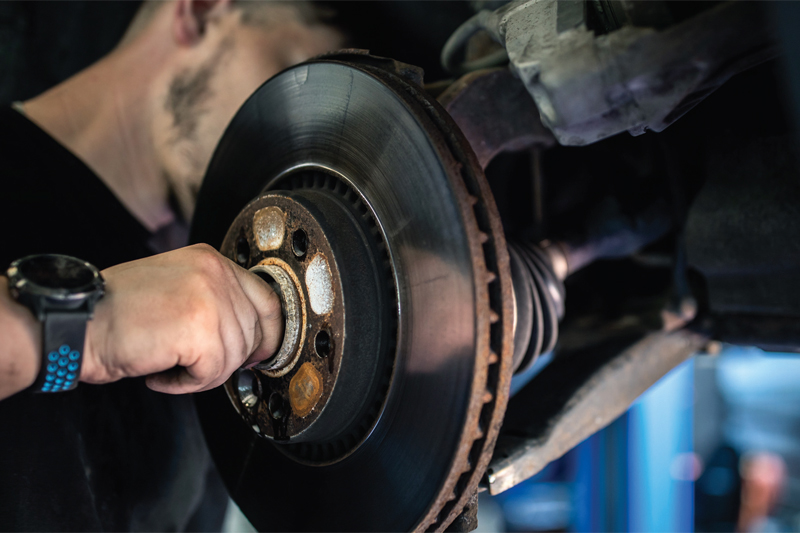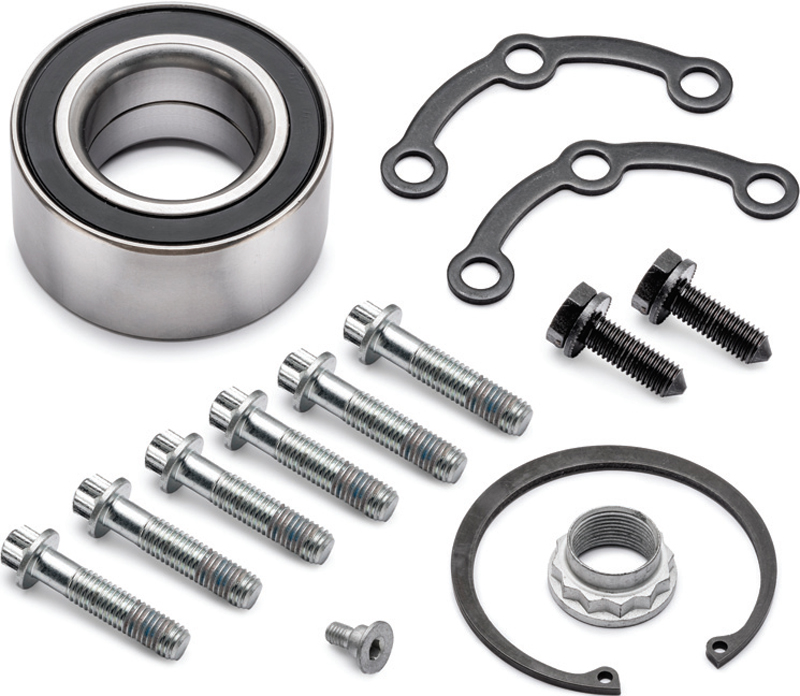
Despite the fact that wheel bearing replacement is a relatively common task within the workshop, there is still confusion among technicians between the different wheel bearing technologies and their respective fitting procedures. Here, Dayco provides clarity on the subject.
A good example of the differing wheel bearing technologies comes with the Citroën C1/Peugeot 107/Toyota Aygo from 2005 onwards, which all share the same platform and utilise Generation 1 bearings on the front (Dayco part number KWD1035) and Generation 3 at the rear (KWD1036).
Generation 1 wheel bearings are generally mounted into hubs and axles, and whilst the vehicle manufacturer’s dismantling and assembly recommendations should always be adhered to, many of the following common sense practices will apply across most applications.
Naturally, during removal, care should be taken to avoid damage to safety critical items such as ABS and brake wear sensors and cables, as well as brake calipers and discs.
Although wheel bearing removal is generally straightforward, it is worth noting that some applications use a thrust washer between the drive shaft nut and the bearing, which needs to be cleaned, inspected and if necessary, replaced. Obviously, if a split pin is present, it must not be reused.
When both pressing out the old bearings and pressing in the new bearings, always follow the vehicle manufacturer’s recommendations and wherever possible, use a hydraulic press and a dolly of the correct diameter (inside and outside). However, great care should be taken to ensure the tool does not come into contact with the bearing seal or sensor rings.
It is also critical that any mounting/pressing forces are only applied to the inner or outer ring that is being pressed into the housing or onto the shaft. Under no circumstances should any force be transmitted through the ball race, as this will damage the bearing and cause its premature failure. If the bearing is secured by a circlip, ensure the opening faces down, so water can easily drain away.

When fitting the bearing, technicians must ensure that the ABS sensor encoder ring is mounted the right way round, so that the vehicle’s encoder reader can operate correctly. Therefore, it’s best to use a Dayco encoder card to determine its orientation.
The bearing is manufactured so that when fitted, the correct operating clearance is automatically established. However, to ensure the new bearing fits properly, the mounting surfaces should be checked, and they must be clean, free from corrosion and from any damage. The bearing should also always be square to the surface it is being mounted into.
Prior to mounting, the surfaces can be lightly oiled to ease assembly, but the use of adhesive should be avoided, as future replacement may require excessive forces to remove the bearing. The drive shaft nut must be tightened to the vehicle manufacturer’s specified torque figure to ensure the bearing clearance is correct, but an impact driver is not recommended.
Dayco’s kit KWD1035 contains a double row angler contact ball bearing with a split inner ring, the snap ring to secure the location of the bearing in its hub/axle, and the castellated nut to clamp and secure the inner ring to the drive shaft. Generation 3 bearings are generally easier to install, as fundamentally, they are a complete unit, so it’s a case of removing the existing bearing, and bolting on a new one, in this case, KWD1036.
Again, the vehicle manufacturer’s replacement procedure must be followed, but standard practice includes taking care when disconnecting the ABS sensor cable and other electrical connectors, supporting the brake caliper correctly after its removal, safely storing the disc brake, and ensuring all surfaces are clean and free from rust/abrasion before the new hub unit is attached.
Naturally, the vehicle manufacturer’s specified torque values must be applied to all the relevant fixings and always replace any bolts that are for one use only.









